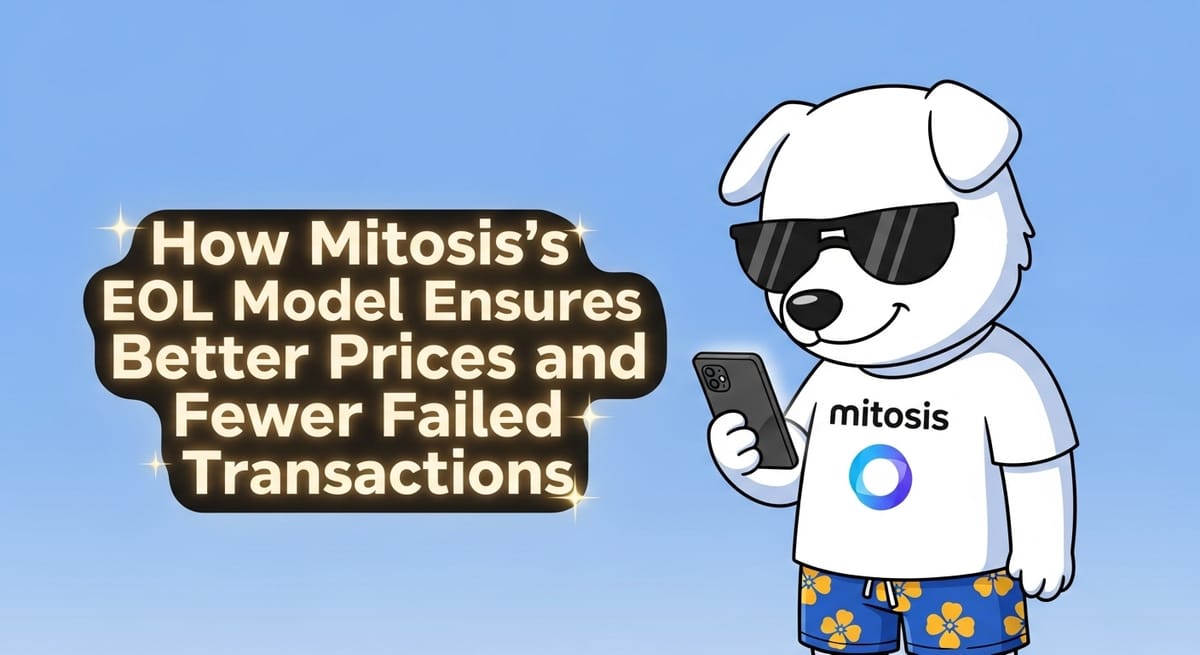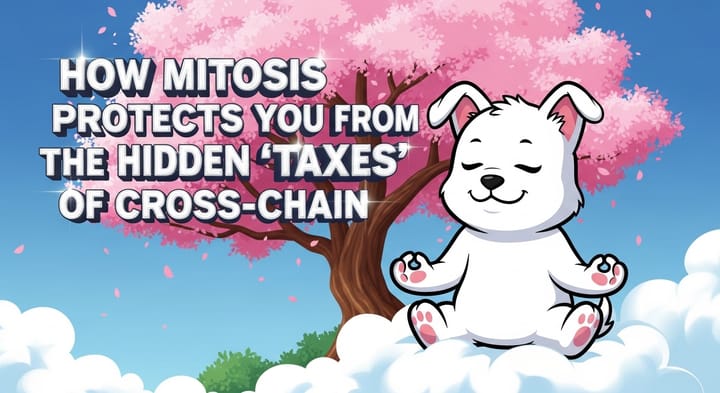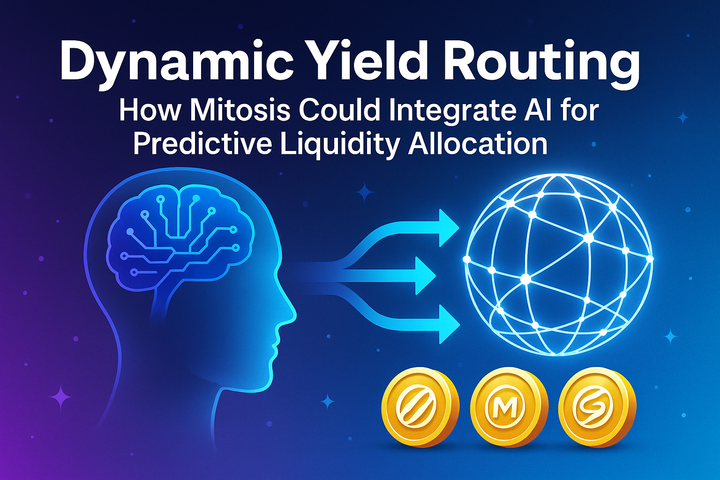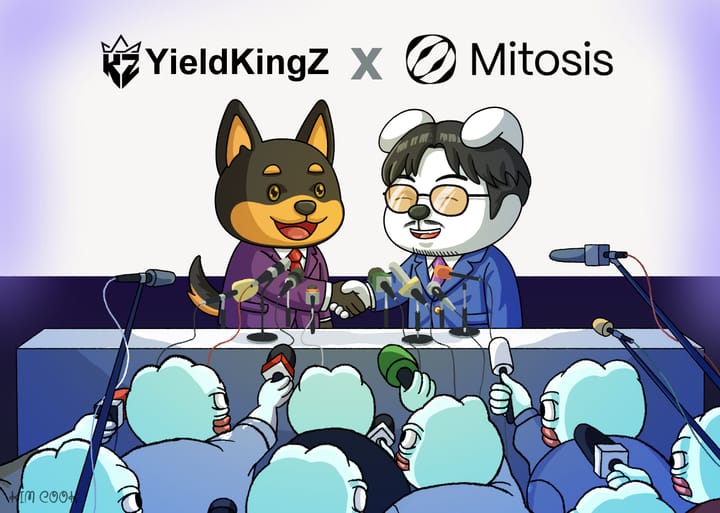More Than Just Liquidity: How Mitosis's EOL Model Ensures Better Prices and Fewer Failed Transactions

1. Introduction: The Invisible Enemies of Your Cross-Chain Trade
Anyone who has used a cross-chain bridge knows that sinking feeling. You've double-checked everything, hit "Confirm," paid the gas fee, and a few minutes later, you see a notification: "Transaction Failed." Or, even worse, the transaction goes through, but you receive significantly fewer funds in your wallet than you expected.
These are common problems, and their cause often lies not in user error, but in the very nature of liquidity on traditional bridges. Beyond the direct fees, there are two invisible enemies that can cost you money and nerves:
- High Slippage: When you make a large swap, your own order can move the market price. As a result, the average execution price is worse than what you initially saw. This is especially true for bridges with "thin" (shallow) liquidity pools.
- Failed Transactions Due to Lack of Liquidity: The liquidity on bridges, provided by anonymous liquidity providers (LPs), is fickle. A large LP can withdraw their funds at any moment. As a result, at the time your transaction is being executed, there may simply not be enough funds in the pool, and your transaction gets "reverted," while you lose the gas fee you paid.
These issues make cross-chain interactions unpredictable and risky, especially for large amounts. They undermine trust and hinder the efficient movement of capital.
Mitosis and EOL: A Different Approach to Liquidity
Mitosis addresses these problems by using a fundamentally different approach to liquidity management – Ecosystem-Owned Liquidity (EOL).
Unlike most bridges that are entirely dependent on "rented" liquidity from users, Mitosis owns and actively manages a significant portion of its liquidity pools through its own treasury.
Why is this so important for you as a user?
Because it directly affects the predictability, cost, and success rate of your transactions. The EOL model is not just a technical detail; it's a fundamental advantage that Mitosis translates into real savings of your money and time.
What Will You Learn From This Article?
In this article, we will explore in detail how the EOL model in Mitosis helps combat the "invisible enemies" of cross-chain transfers:
- How EOL provides deeper and more stable liquidity, reducing the risk of failed transactions.
- How Mitosis can offer better execution prices (low slippage), especially for large trades, thanks to control over its pools.
- Why the predictability provided by EOL is so important for building trust and improving the user experience.
We will show that Mitosis aims not just to "move" your assets from point A to point B, but to provide a quality execution service for your cross-chain operation – reliably, profitably, and with minimal stress.
2. EOL in Action: From Stability to Favorable Execution
Let's look at specific examples to see how the Ecosystem-Owned Liquidity (EOL) model directly improves the user experience by solving the problems of failed transactions and high slippage.
1. Reducing Failed Transactions: The Predictability Problem
- Scenario on a Traditional Bridge:
Alice wants to transfer 100,000 USDC from Ethereum to Solana. She sees that the bridge's pool on Solana has 120,000 USDC and initiates the transaction. But while her transaction is being confirmed on Ethereum (which can take several minutes), another large user (a "whale") manages to withdraw 50,000 USDC from the pool on Solana. When Alice's transaction finally reaches Solana, there are only 70,000 USDC left in the pool. There isn't enough liquidity.- The Result: Alice's transaction fails. She doesn't lose her 100,000 USDC, but she loses the gas fee paid on Ethereum (which can be significant) and her time.
- How Mitosis's EOL Solves This Problem:
- Stable Baseline Liquidity: A significant portion of the liquidity in Mitosis pools is owned by the protocol itself (EOL). This liquidity cannot be suddenly withdrawn by a single "whale." It is managed by the protocol (and in the future, the DAO) based on a long-term strategy.
- Active Management: Mitosis can use its treasury to actively monitor and replenish liquidity pools to maintain them at a sufficient level to meet demand.
- The Result: When Alice initiates a transaction through Mitosis, the probability of the liquidity suddenly "evaporating" is much lower. This leads to a much higher success rate for transactions, saving users money on wasted gas fees and time on repeated attempts.
2. Combating Slippage: The Best Price Problem
- Scenario on a Traditional Bridge:
Bob wants to make a large cross-chain swap – 50 ETH from Arbitrum for wBTC on Polygon. He looks at the rate and expects to receive approximately 1 wBTC. However, the ETH/wBTC pool on the bridge is not very deep. When his large order is executed, it "moves" the price in the pool.- The Result: Due to high slippage, Bob receives not 1 wBTC, but, for example, 0.98 wBTC. He has lost 2% of his capital simply due to market inefficiency.
- How Mitosis's EOL Solves This Problem:
- Deep Liquidity Pools: By owning EOL, Mitosis has a vested interest in creating and maintaining deep liquidity pools for key asset pairs. The deeper the pool, the less impact even a large order has on the price.
- Potential for "Off-Market" Execution (Internalization): Since Mitosis controls liquidity on both sides, it can execute a portion of trades without touching external DEXs. The protocol can offer the user execution at a price based on oracle data (e.g., from Chainlink) with a minimal markup. This protects the user from "sandwich attacks" and high slippage on public markets.
- The Result: Bob, making the same swap through Mitosis, is much more likely to receive an amount close to 1 wBTC because his trade will be executed in a more liquid and controlled environment. Mitosis saves him money by providing better execution.
Conclusion: EOL is a Guarantee of Service Quality
The Ecosystem-Owned Liquidity model is not just a technical feature of Mitosis. It is a fundamental shift in the philosophy of providing cross-chain services. It shifts the focus from simply "providing the ability" to transfer to "providing a quality execution service."
For the user, this means:
- Reliability: More confidence that your transaction will succeed on the first try.
- Value: Fewer losses to slippage and wasted gas fees.
- Predictability: A more stable and predictable experience, which is especially important for large operations and for dApps that integrate Mitosis.
Ultimately, EOL allows Mitosis to treat liquidity not as a random and fickle resource, but as its own product, the quality of which it can and must guarantee. It is this approach, focused on stability and favorable execution for the user, that builds long-term trust and can make Mitosis the preferred choice in the crowded world of cross-chain solutions.
Learn more about Mitosis:
- Explore details on the official website: https://www.mitosis.org/
- Follow announcements on Twitter: https://twitter.com/MitosisOrg
- Participate in discussions on Discord: https://discord.com/invite/mitosis
- Read articles and updates on Medium: https://medium.com/mitosisorg
- Blog: https://blog.mitosis.org/



Comments ()